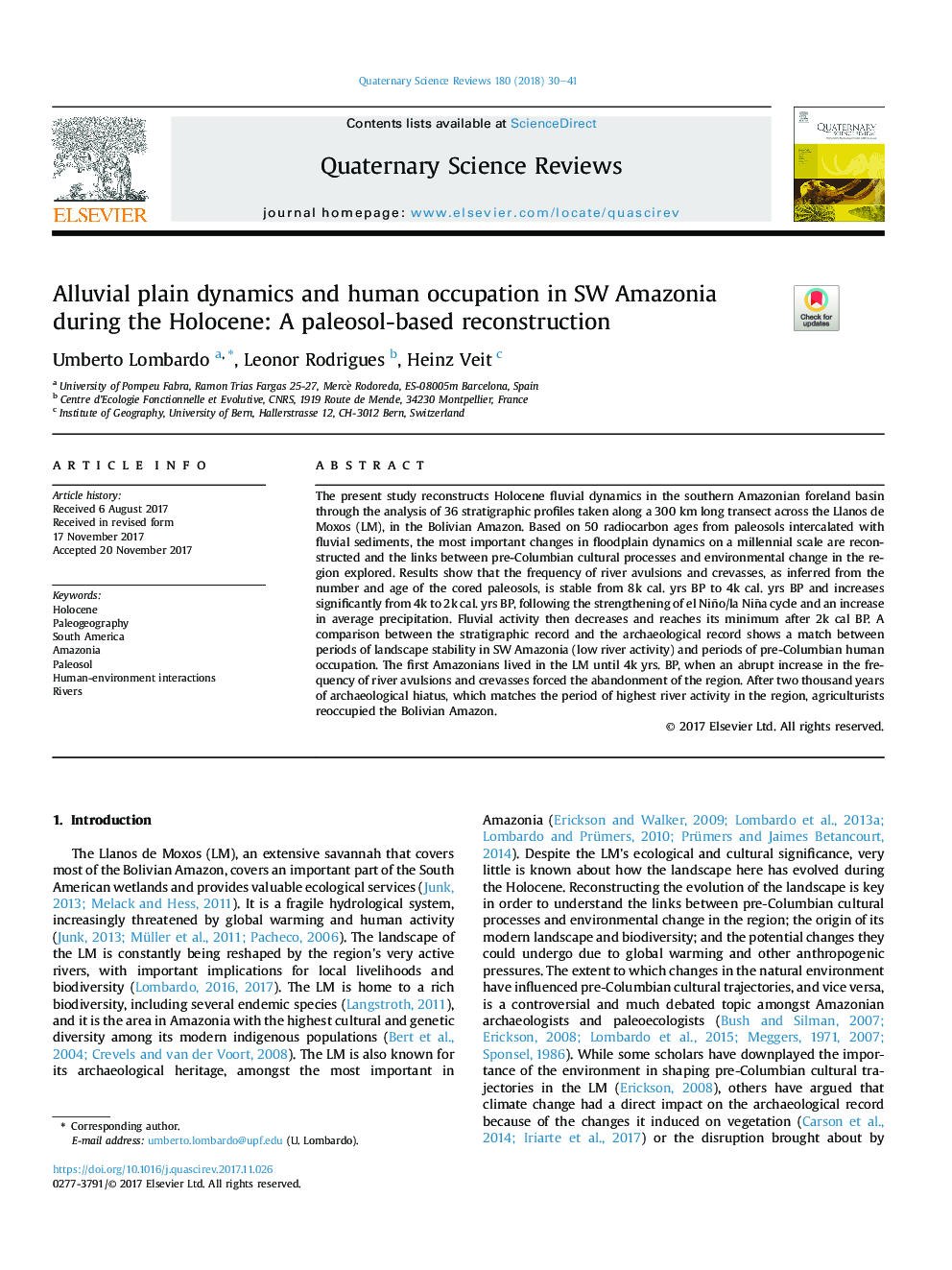| Article ID | Journal | Published Year | Pages | File Type |
|---|---|---|---|---|
| 8915025 | Quaternary Science Reviews | 2018 | 12 Pages |
Abstract
The present study reconstructs Holocene fluvial dynamics in the southern Amazonian foreland basin through the analysis of 36 stratigraphic profiles taken along a 300Â km long transect across the Llanos de Moxos (LM), in the Bolivian Amazon. Based on 50 radiocarbon ages from paleosols intercalated with fluvial sediments, the most important changes in floodplain dynamics on a millennial scale are reconstructed and the links between pre-Columbian cultural processes and environmental change in the region explored. Results show that the frequency of river avulsions and crevasses, as inferred from the number and age of the cored paleosols, is stable from 8k cal. yrs BP to 4k cal. yrs BP and increases significantly from 4k to 2k cal. yrs BP, following the strengthening of el Niño/la Niña cycle and an increase in average precipitation. Fluvial activity then decreases and reaches its minimum after 2k cal BP. A comparison between the stratigraphic record and the archaeological record shows a match between periods of landscape stability in SW Amazonia (low river activity) and periods of pre-Columbian human occupation. The first Amazonians lived in the LM until 4k yrs. BP, when an abrupt increase in the frequency of river avulsions and crevasses forced the abandonment of the region. After two thousand years of archaeological hiatus, which matches the period of highest river activity in the region, agriculturists reoccupied the Bolivian Amazon.
Related Topics
Physical Sciences and Engineering
Earth and Planetary Sciences
Geology
Authors
Umberto Lombardo, Leonor Rodrigues, Heinz Veit,
